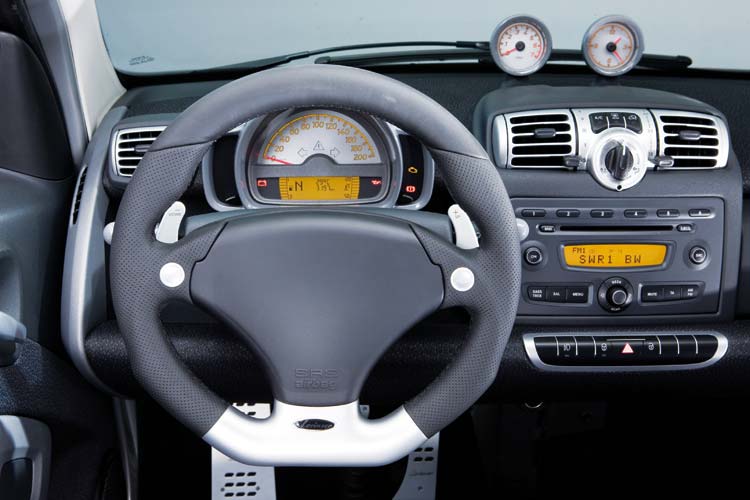 Smart steering wheel gives a health check while driving
Smart steering wheel gives a health check while driving
In the early 1900’s, Birmigham’s Oliver Lucas developed a steering wheel fitted with an electric car horn that quickly became an industry standard. For many years the horn remained the only button found on vehicle steering wheels, but nowadays they are covered with a multitude of buttons for controlling everything from the vehicle’s sound and climate control systems to on board computer functions and a connected smartphone. Researchers from Germany’s Technische Universitaet Muenchen, working in collaboration with BMW, have now extended the function of the humble steering wheel even further with the development of a sensor system integrated into the steering wheel that can give the driver a quick health check while driving.
While a variety of systems for monitoring vital signs of drivers have already been developed as part of studies to measure things such as stress levels while driving, these often see the driver wired up so are not suitable for inclusion in mass produced passenger vehicles. By integrating the appropriate sensors into the steering wheel, the system developed at TUM allows data to be collected unobtrusively. The collected data is then radioed to a microcontroller, which can then relay the measurement results to the vehicle’s information display.
The system uses two commercially available sensors to measure whether the driver is under severe stress, or whether their blood pressure is too high. The first shines an infrared light into the fingers and measures the heart rate and oxygen saturation via reflected light, while the second measures the electric conductance of the skin at contact. Both sensors require the driver’s hands to be in contact with the steering wheel to collect their data – something that’s recommended when operating a vehicle anyway.
The researchers carried out initial tests with subjects from the Munich Senior Citizens Advisory Council and saw data provided during four fifths of driving time. More than half the test subjects reportedly felt encouraged to have repeated check ups after using the system. But the researchers say the applications for the system go beyond simple vital sign monitoring.
“Our vision is to get the vehicle to detect when the driver is no longer feeling well and to the initiate appropriate measures,” says Professor Lueth, who led the research. “When a stress situation is detected by means of skin conductance values, phone calls can be blocked, for instance, or the volume of the radio turned down automatically. With more serious problems the system could turn on the hazard warning lights, reduce the speed or even induce automated emergency braking.”
To extend the amount of data collected and increase the reliability of assertions made about the driver’s health, the system also allows additional devices, such as a blood pressure monitor, to be connected via a radio connection. This is possible using a micro-controller application also developed by the researchers that processes the data and transfers it back to the vehicle.
The TUM team’s research was part of the Fit4Age research project in the “Assistance Systems for an Aging Society” group, with funding provided by grants from the Bavarian Research Foundation (BFS). Collaboration partners at BMW were responsible for the technical installation of the system components into the vehicle.
By Darren Quick
